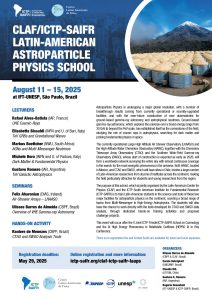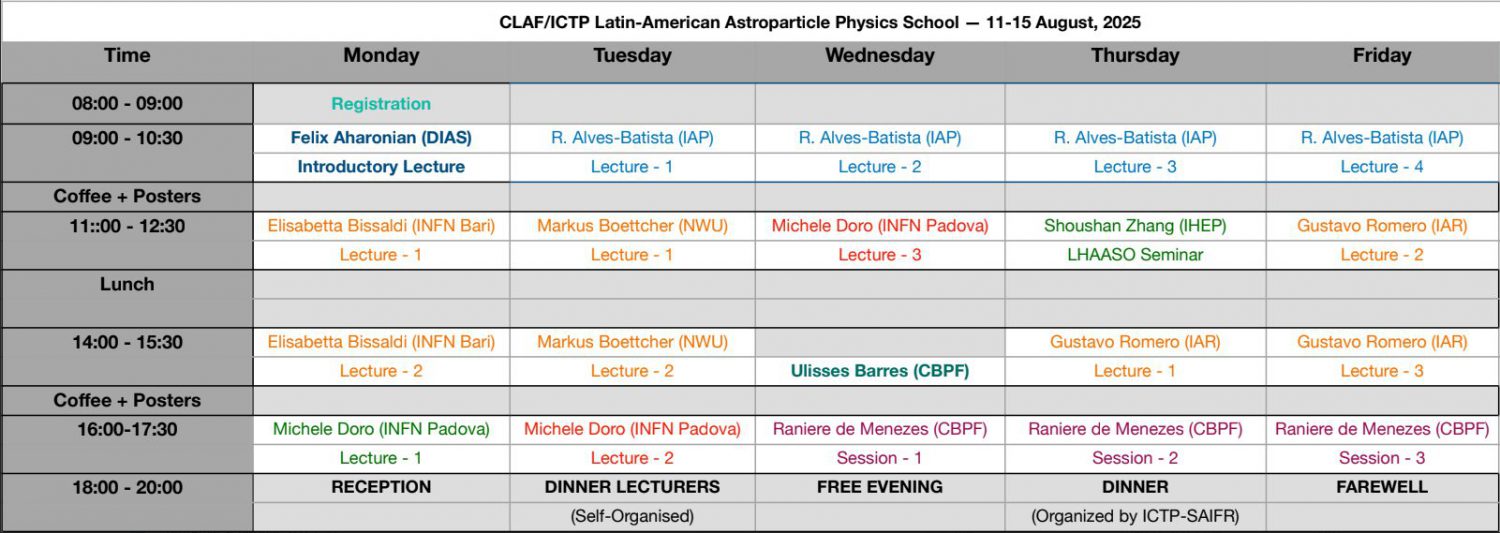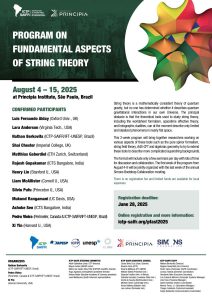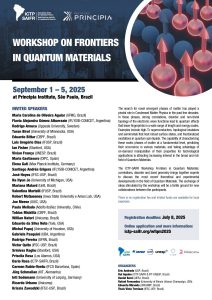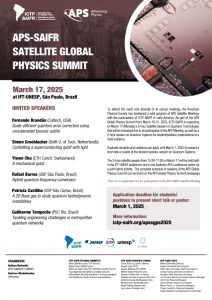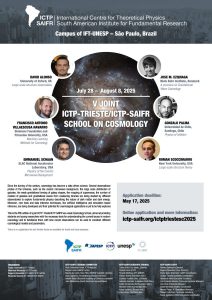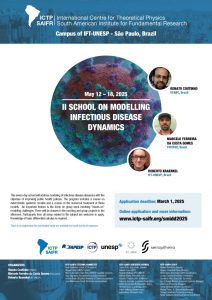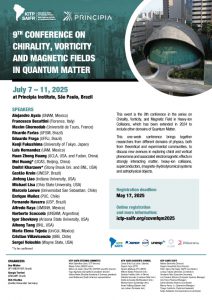Search Results
CLAF/ICTP-SAIFR Latin-American Astroparticle Physics School
August 11 – 15, 2025
ICTP-SAIFR, São Paulo, Brazil
ICTP-SAIFR/IFT-UNESP
Home
The purpose of this school, which is jointly organised by the Latin-American Center for Physics (CLAF) and the ICTP South American Institute for Fundamental Research (ICTP-SAIFR) is to train Latin-American students in the science and tools of these two major facilities for astroparticle physics on the continent, covering a broad range of topics from Multi-Messenger to High-Energy Astrophysics. The students will also have the chance to work directly with the tools developed for CTAO and SWGO data analysis, through dedicated hands-on training activities and proposed challenge-projects.
This event will occur after the V Joint ICTP-Trieste/ICTP-SAIFR School on Cosmology and the IX High Energy Phenomena in Relativistic Outflows (HEPRO IX in Rio) Conference.
Organisers:
- Ulisses Barres de Almeida (CBPF & CLAF, Brazil)
- Carola Dobrigkeit (UNICAMP, Brazil)
- Claudio Dib (UTFSM, Chile)
- Gustavo E. Romero (IAR, Argentina)
- Rogério Rosenfeld (IFT-UNESP & ICTP-SAIFR, Brazil)
There is no registration fee and limited funds are available for travel and local expenses.
Announcement:
Click HERE for online application
Application deadline: June 6, 2025
Lecturers
Lecturers
- Rafael Alves-Batista (IAP, France)
- Gustavo Romero (IAR, Argentina)
- Michele Doro (INFN and University of Padova, Italy)
- Elisabetta Bissaldi (INFN and University of Bari, Italy)
- Markus Boettcher (NWU, South Africa)
-
Felix Aharonian (DIAS, Ireland) : Overview of Ground-based Gamma-ray Astronomy
-
Shoushan Zhang (IHEP, China) : Introduction to Extensive Air-Shower Arrays and LHAASO
-
Ulisses Barres de Almeida (CBPF, Brazil) : The Southern Wide-Field Gamma-ray Observatory, SWGO
- Raniere de Menezes (CBPF, Brazil):
Session 1 – Stereoscopic analysis of the Crab Nebula with Imaging atmospheric Cherenkov telescopesSession 2 – The Galactic center above 1 TeV: simulations with the SWGO science toolsSession 3 – Analysis of a BL Lac object over 5 decades of energy with Fermi-LAT, CTA and SWGO
Posters
Registration
Program
Additional Information
Attention! Some participants in ICTP-SAIFR activities have received email from fake travel agencies asking for credit card information. All communication with participants will be made by ICTP-SAIFR staff using an e-mail “@ictp-saifr.org”. We will not send any mailings about accommodation that require a credit card number or any sort of deposit. Also, if you are staying at Hotel Intercity the Universe Paulista, please confirm with the Uber/Taxi driver that the hotel is located at Rua Pamplona 83 in Bela Vista (and not in Jardim Etelvina).
BOARDING PASS: All participants, whose travel has been provided or will be reimbursed by ICTP-SAIFR, should bring the boarding pass upon registration. The return boarding pass (PDF, if online check-in, scan or picture, if physical) should be sent to secretary@ictp-saifr.org by e-mail.
Visa information: Nationals from several countries in Latin America and Europe are exempt from tourist visa. Nationals from Australia, Canada and USA will be required to obtain a tourist e-visa for visits after April 10, 2025. Please check here which nationals need a tourist visa to enter Brazil.
Accommodation: Participants whose accommodations are provided by ICTP-SAIFR will stay at Hotel Intercity the Universe Paulista. Other hotel recommendations are available here.
Poster presentation: Participants who are presenting a poster MUST BRING A PRINTED BANNER . The banner size should be at most 1 m (width) x 1,5 m (length). We do not accept A4 or A3 paper.
Continue Reading |
Comments Off on
Program on Fundamental Aspects of String Theory
August 4-15, 2025
ICTP-SAIFR, São Paulo, Brazil
Venue: Principia Institute
Home
String theory is a mathematically consistent theory of quantum gravity, but no one has determined whether it describes quantum gravitational interactions in our own Universe. The principal obstacle is that the theoretical tools used to study string theory, including the worldsheet formalism, spacetime effective theory, and holographic dualities, can at the moment describe only limited and idealized phenomena in nearly flat space.
This 2-week program will bring together researchers working on various aspects of these tools such as the pure spinor formalism, string field theory, AdS-CFT and algebraic geometry to try to extend these tools to describe more complicated superstring backgrounds.
The format will include only a few seminars per day with lots of time for discussion and collaboration. The first week of the program from August 4-8 will be jointly organized with the last week of the annual Simons Bootstrap Collaboration meeting.
There is no registration fee and limited funds are available for local expenses.
Organizers:
- Nathan Berkovits (ICTP-SAIFR,IFT/UNESP, Brazil)
-
Pedro Vieira (Perimeter Institute for Theoretical Physics, Canada & ICTP-SAIFR/IFT-UNESP, Brazil)
-
Xi Yin (Harvard University, USA)
Announcement:
Click HERE for online application
Application deadline: June 28, 2025
Confirmed Speakers
-
Luis Fernando Alday (Oxford Univ., UK)
-
Nathan Berkovits (ICTP-SAIFR/IFT-UNESP, Brazil)
-
Shai Chester (Imperial College, UK)
-
Veronika Hubeny (UC Davis, USA)
-
Henry Lin (Stanford U., USA)
-
Liam McAllister (Cornell U., USA)
-
Silviu Pufu (Princeton U., USA)
-
Mukund Rangamani (UC Davis, USA)
-
Ashoke Sen (ICTS Bangalore, India) – to be confirmed
-
Pedro Vieira (Perimeter I., Canada & ICTP-SAIFR/IFT-UNESP, Brazil)
-
Xi Yin (Harvard U., USA)
-
Barton Zwiebach (MIT, USA)
Registration
Program
TBA
Additional Information
Attention! Some participants in ICTP-SAIFR activities have received email from fake travel agencies asking for credit card information. All communication with participants will be made by ICTP-SAIFR staff using an e-mail “@ictp-saifr.org”. We will not send any mailings about accommodation that require a credit card number or any sort of deposit. Also, if you are staying at Hotel Intercity the Universe Paulista, please confirm with the Uber/Taxi driver that the hotel is located at Rua Pamplona 83 in Bela Vista (and not in Jardim Etelvina).
BOARDING PASS: All participants, whose travel has been provided or will be reimbursed by ICTP-SAIFR, should bring the boarding pass upon registration. The return boarding pass (PDF, if online check-in, scan or picture, if physical) should be sent to secretary@ictp-saifr.org by e-mail.
Visa information: Nationals from several countries in Latin America and Europe are exempt from tourist visa. Nationals from Australia, Canada and USA will be required to obtain a tourist e-visa for visits after April 10, 2025.
Accommodation: Participants whose accommodations are provided by ICTP-SAIFR will stay at Hotel Intercity the Universe Paulista. Other hotel recommendations are available here.
Poster presentation: Participants who are presenting a poster MUST BRING A PRINTED BANNER . The banner size should be at most 1 m (width) x 1,5 m (length). We do not accept A4 or A3 paper.
Continue Reading |
Comments Off on
Workshop on Frontiers in Quantum Materials
September 1 – 5, 2025
ICTP-SAIFR, São Paulo, Brazil
Venue: Principia Institute
Home
The search for novel emergent phases of matter has played a pivotal role in Condensed Matter Physics in the past few decades. In these phases, strong correlations, disorder and non-trivial topology of the electronic wave functions lead to quantum effects that leave fingerprints in a wide range of length and energy scales. Examples include high-Tc superconductors, topological insulators and semimetals that host robust surface states, and fractionalized excitations in quantum spin liquids. The capability of characterizing these exotic phases of matter at a fundamental level, predicting their occurrence in various materials, and taking advantage of on-demand manipulation of their properties for technological applications is attracting increasing interest in the broad and rich field of Quantum Materials. Among the open questions in the field, the correlation-driven topological states and the role of the quantum geometry of the wave functions beyond the Berry curvature in macroscopic properties of matter remain topics of intense debate. The ICTP-SAIFR Workshop on Frontiers in Quantum Materials brings together experts to discuss the most recent theoretical and experimental developments in the field of Quantum Materials. The exchange of ideas stimulated by the workshop will be a fertile ground for new collaborations between the participants.
Organizers:
- Eric Andrade (USP, Brazil)
- Rui Aquino (ICTP-SAIFR e IFT-UNESP, Brazil)
- Daniel Barci (UERJ, Brazil)
- Rafael Fernandes (University of Illinois Urbana-Champaign, USA)
- Eduardo Miranda (UNICAMP, Brazil)
- Thaís Victa Trevisan (IFSC-USP, Brazil)
Announcement:
Click HERE for online registration
Registration deadline: July 8, 2025
Invited Speakers
Invited speakers
- Maria Carolina de Oliveira Aguiar (UFMG, Brazil)
- Flavia Alejandra Gómez Albarrazín (IFLYSIB-CONICET, Argentina)
- Rodrigo Arouca (Uppsala University, Sweden)
- Turan Birol (University of Minnesota, USA)
- Eduardo Bittar (CBPF, Brazil)
- Vanuildo de Carvalho (Universidade Federal de Goiás, Brazil)
- Luis Gregório Dias (IF-USP, Brazil)
- Ian Fisher (Stanford, USA)
- Vivian França (UNESP, Brazil)
- Maria Gastiasoro (DIPC, Spain)
- Elena Gati (Max Planck Institute, Germany)
- Santiago Andrés Grigera (IFLYSIB-CONICET, Argentina)
- José Hoyos (IFSC-USP, Brazil)
- Na Hyun Jo (University of Michigan, USA)
- Mariana Malard (UNB, Brazil)
- Valentina Martelli (IF-USP, Brazil)
- Robert McQueeney (Iowa State University e Ames Lab, USA)
- Joe Meese (UIUC, USA)
- Paula Mellado (Adolfo Ibáñez University, Chile)
- Tobias Micklitz (CBPF, Brazil)
- Willian Natori (Unicamp, Brazil)
- Eduardo da Silva Neto (Yale, USA)
- Michal Papaj (University of Houston, USA)
- Gabriela Pasquini (UBA, Argentina)
- Rodrigo Pereira (UFRN, Brazil)
- Victor Quito (IFSC-USP, Brazil)
- Srinivas Raghu (Stanford, USA)
- Dario Rosa (ICTP-SAIFR, Brazil)
- Carmen Rubio-Verdu (IFCO Barcelona, Spain)
- Jörg Schmalian (KIT, Alemanha)
- Inti Sodemann (University of Leipzig, Germany)
- Ricardo Urbano (Unicamp)
- Krissia Zawadzki (IFSC-USP, Brazil)
Registration
Program
TBA
Additional Information
Attention! Some participants in ICTP-SAIFR activities have received email from fake travel agencies asking for credit card information. All communication with participants will be made by ICTP-SAIFR staff using an e-mail “@ictp-saifr.org”. We will not send any mailings about accommodation that require a credit card number or any sort of deposit. Also, if you are staying at Hotel Intercity the Universe Paulista, please confirm with the Uber/Taxi driver that the hotel is located at Rua Pamplona 83 in Bela Vista (and not in Jardim Etelvina).
BOARDING PASS: All participants, whose travel has been provided or will be reimbursed by ICTP-SAIFR, should bring the boarding pass upon registration. The return boarding pass (PDF, if online check-in, scan or picture, if physical) should be sent to secretary@ictp-saifr.org by e-mail.
Visa information: Nationals from several countries in Latin America and Europe are exempt from tourist visa. Nationals from Australia, Canada and USA are exempt from tourist visa until April 10, 2025, but it is unclear if the exemption will be extended after this date.
Accommodation: Participants whose accommodations are provided by ICTP-SAIFR will stay at Hotel Intercity the Universe Paulista. Other hotel recommendations are available here.
Poster presentation: Participants who are presenting a poster MUST BRING A PRINTED BANNER . The banner size should be at most 1 m (width) x 1,5 m (length). We do not accept A4 or A3 paper.
Continue Reading |
Comments Off on
APS-SAIFR Satellite Global Physics Summit
March 17, 2025
ICTP-SAIFR, São Paulo, Brazil
Zoom ID: 840 2143 7098 Zoom password: APS
Room 3 and Auditorium of IFT-UNESP
Home
To extend the reach and diversity of its annual meetings, the American Physical Society has developed a pilot program of APS Satellite Meetings with the participation of ICTP-SAIFR in Latin America. As part of the APS Global Physics Summit from March 16-21, 2025, ICTP-SAIFR is organizing on March 17 (Monday) a 2-hour Satellite Session on Quantum Technologies that will be broadcast live to all participants of the APS Meeting, as well as a 2-hour session on Quantum Systems for student/postdoc presentations and a 50-minute seminar on “Avoiding Predatory Journals” to a local audience
Graduate students and postdocs can apply until March 7, 2025 to present a short talk or poster at the student-postdoc session on Quantum Systems.
The 2-hour satellite session from 15:30-17:30 on March 17 will be held both in the IFT-UNESP auditorium and in the Anaheim APS conference center as a joint hybrid activity. The complete schedule of sessions of the APS Global Physics Summit can be found on the APS Global Physics Summit webapage.
There is no registration fee for participation in the APS-SAIFR Satellite Meeting.
Organizers:
- Nathan Berkovits (ICTP-SAIFR/IFT-UNESP)
- Dario Rosa (ICTP-SAIFR/IFT-UNESP)
- Gustavo Wiederhecker (Unicamp)
Announcement:
Invited Speakers
Invited Speakers:
- 15:30 Fernando Brandão (Caltech, USA): Scale-efficient quantum error correction using concatenated bosonic qubits.
- 15:50 Simon Groeblacher (Delft Univ. of Tech, Netherlands): Controlling a superconducting qubit with light.
- 16:10 Yiwen Chu (ETH Zurich, Switzerland): A mechanical qubit.
- 16:30 Rafael Barros (USP São Paulo, Brazil): Hybrid quantum frequency conversion.
- 16:50 Patricia Castilho (USP São Carlos, Brazil): A 2D Bose gas to study quantum hydrodynamic instabilities.
- 17:10 Guilherme Temporão (PUC Rio, Brazil): Tackling engineering challenges in metropolitan quantum networks.
Abstracts: HERE
Short Talks
- 11:00 – 11:20 Patricia de Assis Almeida (UF Uberlandia): Kondo effect in strained Kagome ribbons
- 11:20 – 11:40 Gustavo Moreto (Unicamp): Fabrication and Characterization of a Superconducting Qubit
- 11:40 – 12:30 Lauren Flintoft (IOP Publishing): Avoiding predatory journals
- 12:30 – 13:30 Lunch break
- 13:30 – 13:50 Eduardo Gonçalves (Unicamp): Tunable Degenerate Optical Parametric Oscillation with Coupled Microresonators
- 13:50 – 14:10 Lucas Cesar Gomes Alvarinho Squillante (Unesp Rio Claro): Grüneisen parameter as an entanglement compass and the breakdown of the Hellmann-Feynman theorem
- 14:10 – 14:30 Pedro Ventura Paraguassú (PUC Rio de Janeiro): Effects of a quantum system upon a classical mesoscopic nanoparticle system
- 14:30 – 14:50 Lauro Barreto Braz (IFUSP): Competing magnetic states on the surface of multilayer ABC-stacked graphene
Program
- 11:00 – 11:40 Student-postdoc presentations (Room 3 of IFT-UNESP)
- 11:40 – 12:30 Lauren Flintoft (IOP Publishing): Avoiding predatory journals (Room 3 of IFT-UNESP)
- 12:30 – 13:30 Lunch break
- 13:30 – 14:50 Student-postdoc presentations (Room 3 of IFT-UNESP)
- 14:50 – 15:30 Poster Session/Coffee break
- 15:30 – 16:30 APS Presentations from the Anaheim conference center (IFT-UNESP auditorium)
- 16:30 – 17:30 APS Presentations from the IFT-UNESP auditorium
Videos and Files
-
11:00 - Gustavo Moreto (Unicamp):
Fabrication and Characterization of a Superconducting Qubit
-
11:20 - Lauren Flintoft (IOP Publishing):
Avoiding predatory journals
-
13:30 - Eduardo Gonçalves (Unicamp):
Tunable Degenerate Optical Parametric Oscillation with Coupled Microresonators
-
13:50 - Lucas Cesar Gomes Alvarinho Squillante (Unesp Rio Claro):
Grüneisen parameter as an entanglement compass and the breakdown of the Hellmann-Feynman theorem
-
14:10 - Pedro Ventura Paraguassú (PUC Rio de Janeiro):
Effects of a quantum system upon a classical mesoscopic nanoparticle system
-
14:30 - Lauro Barreto Braz (IFUSP):
Competing magnetic states on the surface of multilayer ABC-stacked graphene
-
15:30 - Fernando Brandão (Caltech, USA):
Scale-efficient quantum error correction using concatenated bosonic qubits
-
15:50 - Simon Groeblacher (Delft Univ. of Tech, Netherlands):
Controlling a superconducting qubit with light.
-
16:10 - Yiwen Chu (ETH Zurich, Switzerland):
A mechanical qubit
-
16:30 - Rafael Barros (USP São Paulo, Brazil):
Hybrid quantum frequency conversion
-
16:50 - Patricia Castilho (USP São Carlos, Brazil):
A 2D Bose gas to study quantum hydrodynamic instabilities.
-
17:10 - Guilherme Temporão (PUC Rio, Brazil):
Tackling engineering challenges in metropolitan quantum networks
asdasdasd
Photos
Posters
Application to present short talk or poster
Additional Information
Poster presentation: Participants who are presenting a poster MUST BRING A PRINTED BANNER. The banner size should be at most 1 m (width) x 1,5 m (length). We do not accept A4 or A3 paper. Click here to see what a banner looks like: http://designplast.ind.br/produtos/detalhe/impressao-digital/banner/119/9
How to reach the Institute: The program will be held at ICTP South American Institute, located at IFT-UNESP, which is across the street from a major bus and subway terminal (Terminal Barra Funda). The address which is closer to the entrance of the IFT-UNESP building is R. Jornalista Aloysio Biondi, 120 – Barra Funda, São Paulo. The easiest way to reach us is by subway or bus, please find instructions here.
Continue Reading |
Comments Off on
2025 Meeting of ICTP-SAIFR Steering Committee and Scientific Council
On February 17-18, the 2025 meeting of the ICTP-SAIFR steering committee and scientific council will take place at the IFT-UNESP. The tentative schedule is:
Sunday February 16
19:00 – 21:00 Dinner
Monday February 17
10:30 – 13:00 Joint meeting of steering committee and scientific council
13:00 – 14:30 Lunch
14:30 – 16:30 Meeting of steering committee
19:30 – 21:30 Dinner
Tuesday February 18
10:00 – 12:45 Meeting of scientific council
12:45 – 14:15 Lunch
14:15 – 17:00 Meeting of scientific council
Continue Reading | Comments Off on 2025 Meeting of ICTP-SAIFR Steering Committee and Scientific Council
V Joint ICTP-Trieste/ICTP-SAIFR School on Cosmology

July 28 – August 8, 2025
ICTP-SAIFR, São Paulo, Brazil
ICTP-SAIFR/IFT-UNESP
Home
Since the turn of the century, cosmology has become a data driven science. Several observational probes of the Universe, such as the cosmic microwave background, the large scale distribution of galaxies, the weak gravitational lensing of galaxy shapes, the mapping of supernovas, the number of clusters of galaxies and gravitational waves from coalescing binaries are being studied by different observatories to explore fundamental physics describing the nature of dark matter and dark energy. Moreover, new tools and data intensive techniques, like artificial intelligence and simulation based inference, are being developed and their potential for cosmological applications is yet to be fully explored.
This is the fifth edition of a joint ICTP-Trieste/ICTP-SAIFR two-week Cosmology School, aimed at providing students and young researchers with the necessary tools for understanding the current issues in modern cosmology and to familiarize them with how recent observations can be used to constrain different cosmological models and parameters.
Previous events:
IV Joint ICTP-Trieste/ICTP-SAIFR School on Cosmology: Challenges for the Standard Cosmological Model
III Joint ICTP-Trieste/ICTP-SAIFR School on Observational Cosmology
II Joint ICTP-Trieste/ICTP-SAIFR School on Open Problems in Cosmology
- Paolo Creminelli (ICTP-Trieste)
- Mehrdad Mirbabayi (ICTP-Trieste)
- Rogerio Rosenfeld (IFT-UNESP/ICTP-SAIFR)
- Riccardo Sturani (IFT-UNESP/ICTP-SAIFR)
There is no registration fee and limited funds are available for travel and local expenses.
List of participants here.
Announcement:
Application deadline: May 17, 2025 (closed)
Lecturers
Lecturers
1st week
- Roman Scoccimarro (New York University, USA): Large scale structure theory
- Gonzalo Palma (Universidad de Chile, Santiago, Chile): Physics of Inflation
- Jose M. Ezquiaga (Niels Bohr Institute, Denmark): A premiere on Gravitational Wave Cosmology
2nd week
- Emmanuel Schaan (SLAC National Accelerator Laboratory, USA): Physics of the Cosmic Microwave Background
- David Alonso (University of Oxford, UK): Large scale structure observables
- Francisco Antonio Villaescusa Navarro (Simons Foundation and Princeton University, USA): Machine Learning Methods for Cosmology
Posters
TBA
Registration
Program
The schedule might be changed.
Reading Material
Jose M. Ezquiaga (Niels Bohr Institute, Denmark):
- Chapter 6 of the NBI lecture notes.
Roman Scoccimarro (New York University, USA):
- https://cosmo.nyu.edu/roman/courses/cosmology_2023/
- Baumann, Cosmology, 2022, Cambridge Univ. Press
- Dodelson & Schmidt, Modern Cosmology, 2021, Academic Press
- Mo, van den Bosch & White, Galaxy Formation and Evolution, 2010, Cambridge Univ. Press
Additional Information
Attention! Some participants in ICTP-SAIFR activities have received email from fake travel agencies asking for credit card information. All communication with participants will be made by ICTP-SAIFR staff using an e-mail “@ictp-saifr.org”. We will not send any mailings about accommodation that require a credit card number or any sort of deposit. Also, if you are staying at Hotel Intercity the Universe Paulista, please confirm with the Uber/Taxi driver that the hotel is located at Rua Pamplona 83 in Bela Vista (and not in Jardim Etelvina).
BOARDING PASS: All participants, whose travel has been provided or will be reimbursed by ICTP-SAIFR, should bring the boarding pass upon registration. The return boarding pass (PDF, if online check-in, scan or picture, if physical) should be sent to secretary@ictp-saifr.org by e-mail.
Visa information: Nationals from several countries in Latin America and Europe are exempt from tourist visa. Nationals from Australia, Canada and USA are required to obtain a tourist e-visa. Please check here which nationals need a tourist visa to enter Brazil.
Accommodation: Participants whose accommodations are provided by ICTP-SAIFR will stay at Hotel Intercity the Universe Paulista. Other hotel recommendations are available here.
Poster presentation: Participants who are presenting a poster MUST BRING A PRINTED BANNER . The banner size should be at most 1 m (width) x 1,5 m (length). We do not accept A4 or A3 paper.
Continue Reading |
Comments Off on
II School on Modelling Infectious Disease Dynamics

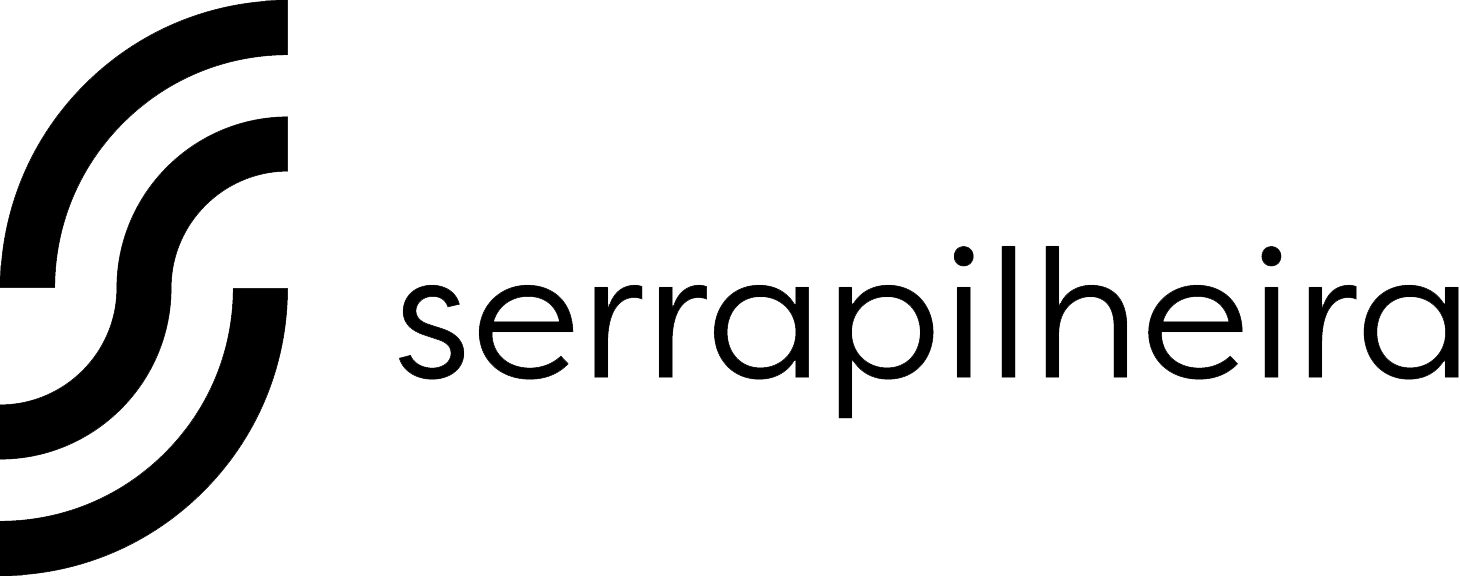
May 12 – 18, 2025
ICTP-SAIFR, São Paulo, Brazil
IFT-UNESP Auditorium
Home
There is no registration fee and limited funds are available for travel and local expenses.
Announcement:
Application deadline: March 7, 2025 (closed)
Organizers:
- Renato Coutinho (UFABC)
- Marcelo Ferreira Gomes (Fiocruz/RJ)
- Roberto Kraenkel (IFT-UNESP)
List of Participants: Updated on May 26, 2025.
Lecturers
Lecturers:
- Renato Coutinho (UFABC): Numerical Methods
- Marcelo Ferreira da Costa Gomes (Fiocruz/RJ): TBA
- Roberto Kraenkel (IFT-UNESP): Deterministic Epidemic Dynamics
Registration
Program
Videos and Files
-
09:00 - Roberto Kraenkel (IFT-UNESP):
Basis of Mathematical Modelling of Infectious Diseases Dynamics - Class 1
- 11:00 - Renato Coutinho (UFABC): Numerical Methods - Class 1
-
14:00 - Roberto Kraenkel (IFT-UNESP):
Basis of Mathematical Modelling of Infectious Diseases Dynamics - Class 2
- 16:00 - Renato Coutinho (UFABC): Numerical Methods - Class 2
-
09:00 - Roberto Kraenkel (IFT-UNESP):
Basis of Mathematical Modelling of Infectious Diseases Dynamics - Class 3
- 11:00 - Renato Coutinho (UFABC): Numerical Methods - Class 3
-
09:00 - Marcelo Ferreira da Costa Gomes (Fiocruz/RJ):
Epidemiological Data Analytics - Class 1
-
11:00 - Marcelo Ferreira da Costa Gomes (Fiocruz/RJ):
Epidemiological Data Analytics - Class 2
-
09:00 - Marcelo Ferreira da Costa Gomes (Fiocruz/RJ):
Epidemiological Data Analytics - Class 3
- 11:00 - Renato Coutinho (UFABC): Numerical Methods - Class 4
-
09:00 - Roberto Kraenkel (IFT-UNESP):
Basis of Mathematical Modelling of Infectious Diseases Dynamics - Class 4
-
11:00 - Renato Coutinho (UFABC):
Numerical Methods - Class 5
-
09:00 - Roberto Kraenkel (IFT-UNESP):
Basis of Mathematical Modelling of Infectious Diseases Dynamics - Class 5
asdasdasd
Photos
Additional Information
Visa information: Nationals from several countries in Latin America and Europe are exempt from tourist visa. Nationals from Australia, Canada and USA will be required to obtain a tourist e-visa for visits after April 10, 2025. Please check here which nationals need a tourist visa to enter Brazil.
How to reach the Institute: The school will be held at ICTP South American Institute, located at IFT-UNESP, which is across the street from a major bus and subway terminal (Terminal Barra Funda). The address which is closer to the entrance of the IFT-UNESP building is R. Jornalista Aloysio Biondi, 120 – Barra Funda, São Paulo. The easiest way to reach us is by subway or bus, please find instructions here.
Continue Reading |
Comments Off on
9th Conference on Chirality, Vorticity and Magnetic Fields in Quantum Matter

July 7-11, 2025
ICTP-SAIFR, São Paulo, Brazil
Venue: Principia Institute
Zoom ID: 812 5588 7092
Password: quantum
Home
This one-week conference brings together researchers from different domains of physics, both from theoretical and experimental communities, to discuss new avenues in exploring chiral and vortical phenomena and associated electromagnetic effects in strongly interacting matter, heavy-ion collisions, superconductors, (magneto-)hydrodynamical systems and astrophysical objects. This event is the 9th conference in the series on Chirality, Vorticity, and Magnetic Field in Heavy-Ion Collisions, which has been extended in 2024 to include other domains of Quantum Matter.
More information about previous events can be found at this link.
Limited funds are available for local expenses.
Organizers:
- Ana Mizher (IFT-UNESP/USP, Brazil)
- Giorgio Torrieri (UNICAMP, Brazil)
- Dirk Rischke (Goethe Universitat, Germany)
List of participants here.
Announcement:
There is a registration fee of R$700.00 (~US$120.00 based on the exchange rate of February 2025) to be paid upon arrival at the event. Payment can be made in cash or by Visa and Mastercard credit cards. Graduate students from South America are exempt from this fee.
Registration deadline: May 17, 2025 (closed)
Invited speakers
Invited speakers
- Alejandro Ayala (UNAM, Mexico)
- Francesco Becattini (Florence, Italy)
- Fabio Braghin (UFG, Brazil)
- Dyana Duarte (UFSM, Brazil)
- Gergely Endrodi (Eotvos University, Hungary)
- Ricardo Farias (UFSM, Brazil)
- Eduardo Fraga (UFRJ, Brazil)
- Kenji Fukushima (Tokyo, Japan)
- Eduardo Garnacho (Eotvos University, Hungary)
- Luis Hernandez (UAM, Mexico)
- Mauricio Hilpert (CBPF, Brazil)
- Huan Zhong Huang (UCLA, USA, and Fudan, China)
- Mei Huang (UCAS, Beijing, China) TBC
- Dmitri Kharzeev (Stony Brook Uni. and BNL, USA) TBC
- Gastão Krein (UNESP, Brazil)
- Jinfeng Liao (Indiana Uni., USA)
- Michael Lisa (Ohio State Uni., USA)
- Marcelo Loewe (Universidad San Sebastian, Chile)
- Cicero Municlnelli
- Enrique Muñoz (PUC, Chile)
- Leticia Palhares (UERJ, Brazil)
- Alfredo Raya (UMSNH, Mexico)
- Norberto Scoccola (UNSAM, Argentina)
- Igor Shovkovy (Arizona State Univ., USA)
- Jun Takahashi
- Aihong Tang (BNL, USA)
- Maria Elena Tejeda (UniCol, Mexico)
- Cristian Villavicencio (UBB, Chile)
- Sergei Voloshin (Wayne State, USA)
Registration
Announcement:
There is a registration fee of R$700.00 (~US$120.00 based on the exchange rate of February 2025) to be paid upon arrival at the event. Payment can be made in cash or by Visa and Mastercard credit cards. Graduate students from South America are exempt from this fee.
Registration deadline: May 17, 2025 (closed)
Program
Titles and abstracts here.
-
The schedule may be updated.
The conference dinner will be held at the restaurant “Consulado Mineiro”: Alameda Santos, 1107 – Cerqueira César, São Paulo – SP, 01419-002
Posters+Flash Talks
-
- Ana Gabriela Vargas Fernández (Universidad Autónoma Metropolitana-Iztapalapa): Phase Diagram of Strongly Interacting Matter under Magnetic Fields: A Self-Consistent Effective Model Approach
- Bernardo Andrade Perez-Rubio (School of Science, UNAM): Explicit Regularization within the proper time integral representation
- Fernando César Sobrinho (Physics Institute of São Paulo University (IF-USP)): Production of meson molecules in photon induced processes at the LHC and EIC
- Fillipe Marques Guedes (Universidade do Estado do Rio de Janeiro): Unruh-De Witt detectors and the Bell-CHSH inequality
- Flávia Gomes Fialho (UNICID): Electromagnetic Effecs on the QCD Coupling
- Henrique Rodrigues Martins Fontes (Instituto de Física da Universidade de São Paulo): Soft And Semi-hard Components Of Multiplicity Distributions In The kT Factorization Approach
- Joana Carolina Sodré (CBPF): Thermomagnetic effects on light pseudoscalar meson masses within the SU(3) Nambu–Jona-Lasinio model
- Letícia Laurindo (USP): Prebiotic Homochirality: An Overview of Theoretical Models and Environmental Constraints
- Luis Alberto González (Autonomous Metropolitan University Iztapalapa Campus): Effects of a rotating medium on the phase diagram of QCD using the NJL model
- Manuel Emiliano Monreal Cancino (Physics Department. School of Sciences, UNAM.): The propagator of a charged vector boson in the presence of an external magnetic field using the Ritus Eigenfunction method
- Richard Terra (Instituto de Física da USP): Baryon junction and kT-factorization in pPb collisions
- Santiago Bernal Langarica (Institute for Nuclear Sciences, National Autonomous University of Mexico): Two-gluon one-photon vertex in the presence of a magnetic field: general structure and one-loop approximation in the intermediate field regime
- Sidney Avancini (universidade federal de santa catarina): Computation of light pseudoscalar meson screening masses in a magnetized medium
- Úrsula Maria Martins Da Silva Fonseca (UFRJ): Thermal evolution of quark stars from perturbative QCD
- Vinícius Silva Franção (Universidade de São Paulo): Electromagnetic Field Effects on Event-by-Event Simulations
- Washington Francisco dos Santos Junior (IFT Unesp): Formation of Current Vortices in Curved Quantum Dots: The
Role of Molecular Orbital Interference
Abstracts here.
Videos and Files
2025-07-07
-
09:30 - Ricardo Farias (UFSM, Brazil):
Chiral vortical catalysis: Insights from LQCD
-
10:00 - Andrea Palermo (Stony Brook University):
Spin alignment of the $\phi$ meson in the hadronic phase of the Quark Gluon Plasma
-
10:50 - Caio Vaz Brito (Universidade Federal Fluminense):
Causal and stable magnetohydrodynamics for an ultrarelativistic two-component gas
-
11:20 - Pracheta Singha (TBA):
Finite spin density effects on the chiral phase transition in the linear sigma model
-
11:30 - Danielle Roselli (Goethe University Frankfurt am Main):
Dissipative corrections to the particle momentum spectrum of a decoupling fluid
-
11:50 - Annamaria Chiarini (Goethe University Frankfurt am Main):
Semi-Classical Spin Hydrodynamics: Current Status and the Road Ahead
-
14:20 - Alejandro Ayala (UNAM, Mexico):
Asymmetric muon-antimuon emission from Z0 decays: a clear magnetometer in relativistic heavy-ion collisions
-
15:10 - Eduardo Fraga (UFRJ, Brazil):
Hot and dense perturbative QCD in a very strong magnetic background
-
15:40 - Gastão Krein (UNESP, Brazil):
Nonequilibrium Dynamics of the Chiral Quark Condensate: Magnetic Field Effects and Inhomogeneous Phases
-
16:30 - Cristian Villavicencio (UBB, Chile):
Qark anomalous magnetic moment in the presence of an extreme magnetic field
-
16:50 - Alfredo Raya (UMSNH, Mexico):
Aspects of Topology from the Dirac Equation and Supersymmetry
-
17:00 - Fabio Braghin (Universidade Federal de Goiás):
Unusual quark effective interactions from vacuum polarization under relatively weak magnetic field
-
08:40 - Dima Cheskis (Ariel University):
Magneto-Optical and Transport Measurements of Co₃Sn₂S₂, a Ferromagnetic Weyl Semimetal
-
09:10 - Huan Zhong Huang (UCLA, USA, and Fudan, China):
Intriguing Features from CME and Critical Point Searches from RHIC BES Program
-
09:40 - Dimitri Kharzeev (Stony Brook Uni. and BNL, USA):
Chiral magnetic effect in heavy ion collisions: The present and future
-
10:30 - Gergely Endrodi (Eotvos Univ.):
Anomalous transport phenomena on the lattice
-
11:00 - Eduardo Garnacho (Eotvos University):
Out-of-equilibrium CME conductivity from Lattice QCD
-
11:30 - Jose Javier Hernandez (University of Bielefeld):
The axion-photon coupling from Lattice QCD
-
11:50 - Aritra Bandyopadhyay (TBA):
Signatures of local acceleration of quark-gluon plasma in the dilepton production
-
09:00 - Marcelo Loewe (Universidad San Sebastian, Chile):
π-π scattering lengths in the frame of the linear sigma model: Electric field effects (and something else)
-
09:30 - Enrique Muñoz (PUC, Chile):
Exploring magnetic fluctuation effects in QED fields: Theory and phenomenological implications
-
10:00 - Maxim Chernodub (TBA):
Chiral and deconfinement thermal transitions at finite quark spin polarization in lattice QCD simulations
-
10:20 - Jinfeng Liao (Indiana Uni., USA):
Spin and Chirality Transport in Heavy Ion Collisions at BES Energies
-
11:00 - Francesco Becattini (Florence, Italy):
Pseudogauge-invariant local equilibrium distribution
-
11:00 - Kenji Fukushima (Tokyo, Japan):
Spin potential in and out of equilibrium
-
11:30 - Cicero Muncinelli/Jun Takahashi (Unicamp):
TBA
-
14:00 - Norberto Scoccola (UNSAM, Argentina):
Anomalous neutral pion decay in a strong magnetic field
-
14:30 - William Tavares (Universidade Estadual do Rio de Janeiro):
Chirally imbalanced medium in a four-fermion interaction model beyond the large-$N_c$ approximation
-
15:30 - Jorge David Castaño-Yepes (Departamento de Física, Universidad del Valle, Colombia):
Twisting the Quark-Gluon Plasma: Insights into Electromagnetic en Dilepton Emission from a Rotating Medium
-
16:00 - Leticia Palhares (UERJ):
Testing Infrared Confining Models Beyond Fundamental Correlation Functions
-
16:30 - Others (others):
Flash Talks
-
09:00 - Aihong Tang (BNL, USA):
Probing Spin Dynamics and Magnetic Fields in Heavy-Ion Collisions
-
09:30 - Sergei Voloshin (Wayne State, USA):
Recent results on polarization in high energy nuclear collisions at LHC and RHIC energies
-
10:00 - Fuqiang Wang (Purdue University):
Measurements of azimuthal correlations with spectator and participant planes to search for the chiral magnetic effect in STAR
-
10:50 - Mike Lisa (Ohio State University):
Vortex rings from high energy central p+A collisions
-
11:20 - Raul Wolters (Utrecht University):
Spin-hydrodynamics and hyperon polarization in Trajectum
-
11:40 - Mauricio Hippert (Centro Brasileiro de Pesquisas Físicas):
Effective action for relativistic hydrodynamics from Crooks fluctuation theorem
-
14:00 - Shu Lin (Sun Yat-sen University):
Spin polarization in off-equilibrium medium at weak and strong coupling
-
14:30 - Igor Shovkovy (Arizona State Univ., USA):
Neutrino emission from quark cores of magnetars
-
15:00 - Dyana Duarte (UFSM):
Medium Separation Scheme and the Cold-Magnetized Superconducting Quark Matter
-
15:30 - Osvaldo Ferreira Neto (Universidade Federal do Rio de Janeiro):
Pion condensation and chiral symmetry breaking in the early universe
asdasdasd
Photos
Additional Information
COVID-19: Brazilians and foreigners no longer have to present proof of vaccination before entering the country.
Visa information: Nationals from several countries in Latin America and Europe are exempt from tourist visa. Nationals from Australia, Canada and USA are required to obtain a tourist e-visa.
Accommodation: Participants whose accommodations are provided by ICTP-SAIFR will stay at Hotel Intercity the Universe Paulista. Other hotel recommendations are available here.
Poster presentation: Participants who are presenting a poster MUST BRING A PRINTED BANNER . The banner size should be at most 1 m (width) x 1,5 m (length). We do not accept A4 or A3 paper.
Continue Reading |
Comments Off on
2025 Embed Activities
São Paulo International Schools on Theoretical Physics
School on Synchronization: from collective motion to brain dynamics
February 3 – 14, 2025
School on the Origins of Life, Behavior and Cognition
March 10 – 21, 2025
School and Workshop on the Physics of Life
March 24 – 30, 2025
School on Biological Physics and Biomolecular Simulations in the Machine Learning Era
April 14 – 19, 2025
São Paulo Advanced School on Disordered Systems
April 28 – May 9, 2025
II School on Modeling Infectious Disease Dynamics
May 12 – 18, 2025
School on Multineutron Clusters in Nuclei and in Stars
May 27 – May 31, 2025
VI Siembra-HoLAGrav Young Frontiers Meeting at ICTP-SAIFR
June 30 – July 11, 2025
Perimeter-SAIFR-IFT Journeys School
July 14 – 20, 2025
V Joint ICTP-Trieste/ICTP-SAIFR School on Cosmology
July 28 – August 8, 2025
CLAF/ICTP-SAIFR Astroparticle Physics School
August 11 – 15, 2025
IV School on Light and Cold Atoms
October 20 – 31, 2025
School on Emergent Phenomena in Many-Body Systems
November 3 – 14, 2025
Fourth School on Data Science and Machine Learning
November 17 – 21, 2025
QCD meets Gravity XI School
December 8 – 12, 2025
Minicourses
Minicourse on Effective Field Theory in Large Scale Structure
January 6 – 7, 2025
Minicourse on Groundbreaking Papers in Theoretical Physics
April 1 – May 5, 2025
Minicourse on Partial Differential Equations: analytical and numerical tools
May 1 – June 30, 2025
Minicourse on Black Hole Superradiance
May 15 – 22, 2025
Minicourse on Testing the Cosmological Principle
June 16 – 17, 2025
Minicourse on Fundamentals of Biological Physics
November 10 – 14, 2025
Meetings/Programs/Workshops
Steering Committee and Scientific Council Meeting
February 17 – 18, 2025
Research Group Meetings on Quantum Technologies
February – December, 2025
Research Group Meetings in Astro & Cosmo
March – December, 2025
APS-SAIFR Satellite Global Physics Summit
March 17, 2025
II Brazilian Workshop on Soft Matter
April 7-11, 2025 (Instituto Principia)
Gravitational Wave Open Data Workshop 2025
May 12 – 14, 2025
Joint ICTP-Lincei Conference on Quantum Science and Technology
May 26-30, 2025
Workshop on Multineutron Clusters in Nuclei and in Stars
June 2-6, 2025 (Instituto Principia)
Physics of Life South American Network Meetings
June – December, 2025
Program on Anomalies, Topology and Quantum Information in Field Theory and Condensed Matter Physics
June 16 – 27, 2025 (Instituto Principia)
9th Conference on Chirality, Vorticity and Magnetic Fields in Quantum Matter
July 7 – 11, 2025 (Instituto Principia)
Simons Collaboration Bootstrap 2025
July 21 – August 8, 2025 (Instituto Principia)
Program on Fundamental Aspects of String Theory
August 4 – 15, 2025 (Instituto Principia)
Workshop on Frontiers in Quantum Materials
September 1 – 5, 2025 (Instituto Principia)
Program on Quantum Many-Body Dynamics: Thermalization and its Violations
September 8 – 19, 2025 (Instituto Principia)
QCD meets Gravity XI Conference
December 15 – 19, 2025 (Instituto Principia)
Outreach
V Escola de Verão ICTP-SAIFR para Jovens Físicos
January 16-23, 2025
V Curso de Verão ICTP-SAIFR para Professores de Física de Ensino Médio
January 20-24, 2025
Ciência no Cinema
January – December, 2025
Ciência no Cinema para crianças
February – December, 2025
Clube do Livro Sci-SAIFR
February – December, 2025
Distinguished Public Lectures
February – December, 2025
Física Além da Sala de Aula
February – December, 2025
Física Moderna para a Sala de Aula
March – November, 2025
Minicursos para Estudantes de Ensino Médio
March-December, 2025
Jogos de Física para Estudantes
March-December, 2025
Papos de Física
March – December, 2025
Jogos de Física para Professores
March – December, 2025
Programa para Jovens Cientistas
May-December, 2025
Módulas de Aulas para Estudantes de Ensino Médio
May-December, 2025
Dia da Física
May 19, 2025
Arte-Ciência na Escola
June 5, 2025
IV Curso de Inverno para Jovens Físicos
July 7-11, 2025
ICTP-SAIFR Competition for Young Physicists
July 19, 2025
Continue Reading | Comments Off on 2025 Embed Activities
2025 Meeting of Steering Committee and Scientific Council
On February 17-18, the 2025 meeting of the ICTP-SAIFR steering committee and scientific council will take place at the IFT-UNESP. The tentative schedule is:
Monday February 17
10:00 – 13:00 Joint meeting of steering committee and scientific council
13:00 – 14:15 Lunch
14:15 – 16:15 Meeting of steering committee
19:30 – 21:30 Dinner
Tuesday February 18
10:00 – 12:30 Meeting of scientific council
12:30 – 14:00 Lunch
14:00 – 17:00 Meeting of scientific council
Fotos aqui
Continue Reading | Comments Off on 2025 Meeting of Steering Committee and Scientific Council

